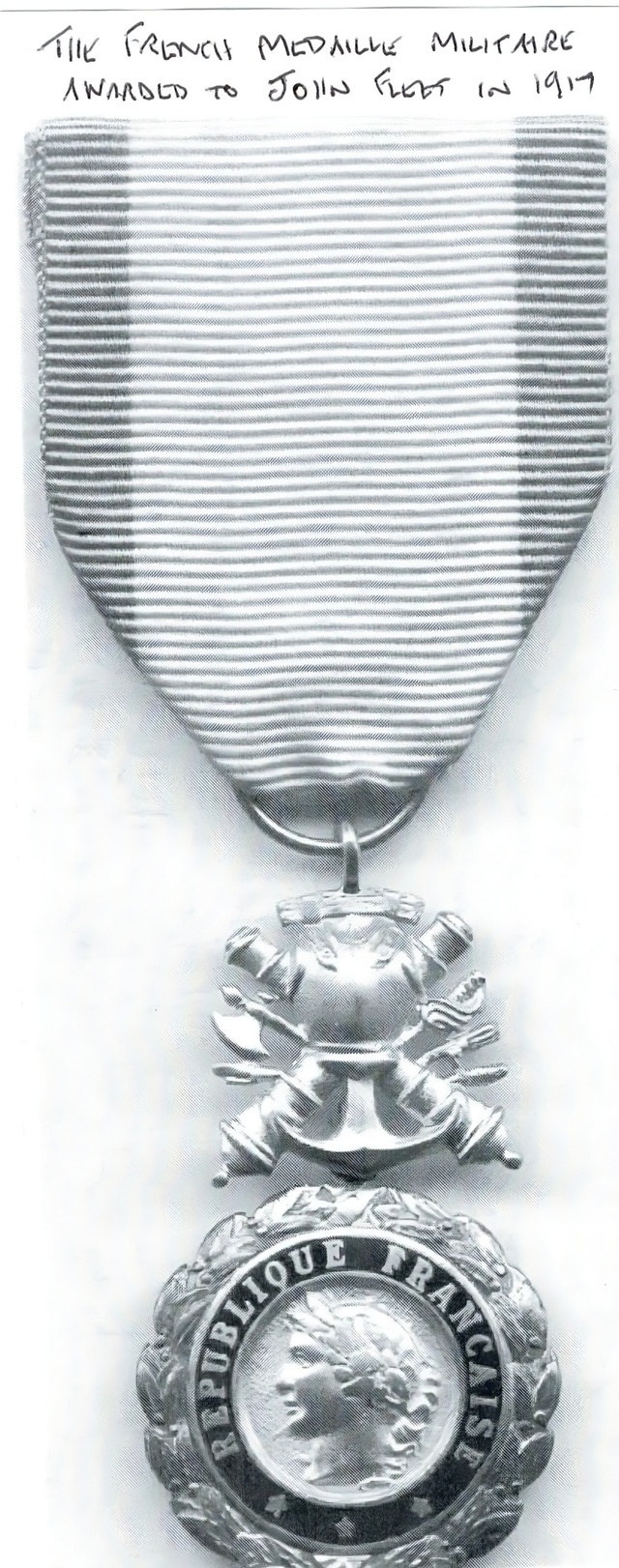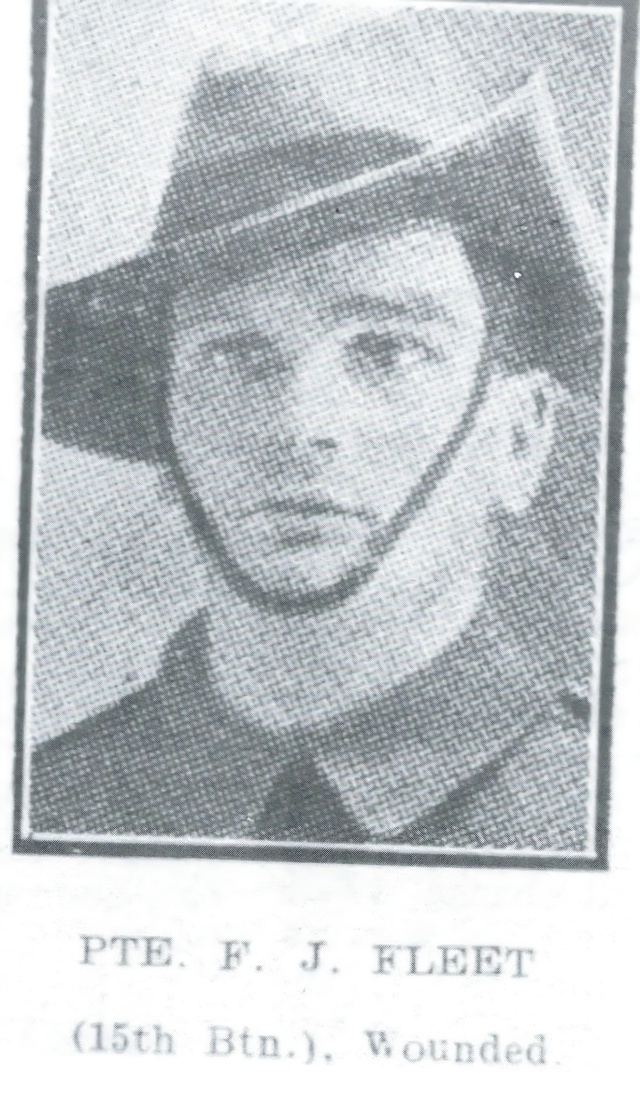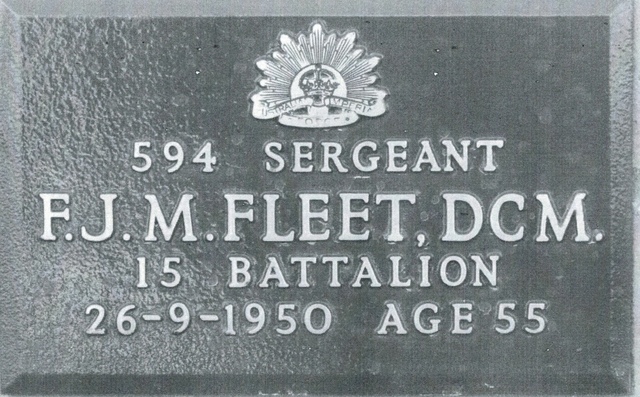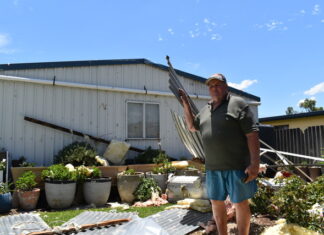On the 19th. January 1917, Sergeant John Francis Fleet of 15th Battalion, a Gallipoli veteran who had been wounded in the landing and now fighting with the battalion in France, demonstrated bravery and leadership in the battle in the vicinity of Mouquet as the allies pushed towards the Somme. Such was his action that so impressed the French Commanders that he was awarded the French Medaille Militaire (Military Medal). This was a rare award and here is what he did that so impressed the French:
“A member of the original battalion and wounded at Gallipoli on 30th May 1915 has been through all the fighting in France.
He was noticed for his courageous behaviour and powers of leadership, during operations in the vicinity of Mouquet Farm
during periods of 5/10th August and 27/29th of August 1916 and particularly for his determined fighting on the night of 8/9th
August in an attack on the enemy trenches when although wounded he remained, and materially assisted in repulsing
enemy counter attacks. He has been previously recommended but has not received any reward”.
John Francis Fleet was only 20 years old but was showing out as the complete fighting ANZAC and this rare French honor was a tribute to his
courage. The Medaille Medal was a military decoration of the French Republic and was ranked as the third highest award after the Legion of Honor. It was established in 1852 by the first President of France Napolean Bonaparte. It was conferred on John Fleet by the President of the French Republic on 23rd May 1917.
John Francis Fleet, the son of James and Sarah Fleet, was born in Brisbane on the 20th. April 1895 and worked as a stove maker prior to his enlistment into the Australia Imperial Force on the 21st. August 1914. John’s war began when he embarked for Gallipoli on board the
HMAT A40 “Ceramic” as a member of the 15th Battalion and was present when they stormed the Gallipoli heights where he was wounded with a gunshot wound to his left thigh and admitted to the army convalescent camp at Helouan to recover.
At this stage of his military career, John was showing all the qualities of leadership and was soon under the notice of his Commanders. On the 5th. April 1916, John was promoted to Lance Corporal and 4 months later to Corporal. Demonstrating his action in the field he was again promoted to Sergeant on the 31st of October before being wounded a second time and was transferred to Beaufort Australian hospital in England with a gunshot wound to his arm. John was becoming somewhat of a seasoned veteran. After recovery he was back into the thick of the action in France with the 4th Australian Division when on the 1st of October he was caught up in the battle of Zonnebeke with the 15th Battalion which once again, saw him being nominated for the Military Medal. Here is his nomination report:
“For conspicuous gallantry and devotion to duty during operations near Zonnebeke on the 26th. September 1917.
He was invaluable to his company commander in the consolidation and organization of the Blue Line. He organized
a chain of small dumps forward from Battalion to Front Line and ensured a plentiful supply of ammunition. He organized
wiring parties and put out a sufficient quantity to hamper the enemy’s approach to our line under intense enemy shell
fire and his personal example was responsible for the energetic manner in which his men worked. He has already been
awarded the Medialle Militiare for excellent work”.
Over a period, from 1917 to 5th March 1918, John was wounded for the third time and spent more time at military hospitals at Dartford and Bristol before being granted pre-embarkment leave in London on the 4th. July 1919 before returning to Australia on the HT “Anchises” on the 22nd. August 1919. He had been promoted to Company Sergeant Major but reverted back to Sergeant on the 10th. November 1917 at his own request for reasons unknown. John was given a medical discharge with disabilities resulting from his wounds and the effects of gas. John’s official documents were sometimes hard to research but what did emerge was it could never be questioned as to his ability as a front-line soldier. He survived the landing on the Gallipoli Peninsula and later, experienced the harsh conditions of the Western Front in France. He was a true ANZAC, and his decorations made him not only a hero of Australia, but also a hero of France.
Francis John Fleet never forgot his wartime experiences and after his return he became an active member of the Return Services League. More importantly, he was also very dedicated to the 15th Battalion Association and the Angel’s Remembrance Club. He served as Secretary and Treasurer over the years and was a strong supporter of ANZAC Day and Remembrance Day in November. It could be said that, like many of World War 1 soldiers, the effects of gas and other war wounds were a contributing factor in their health. Sadly, John passed away at the Greenslopes Military Hospital on 26th September 1950 and now lies at rest in the Bridgeman Downs Garden of Remembrance in Brisbane.









